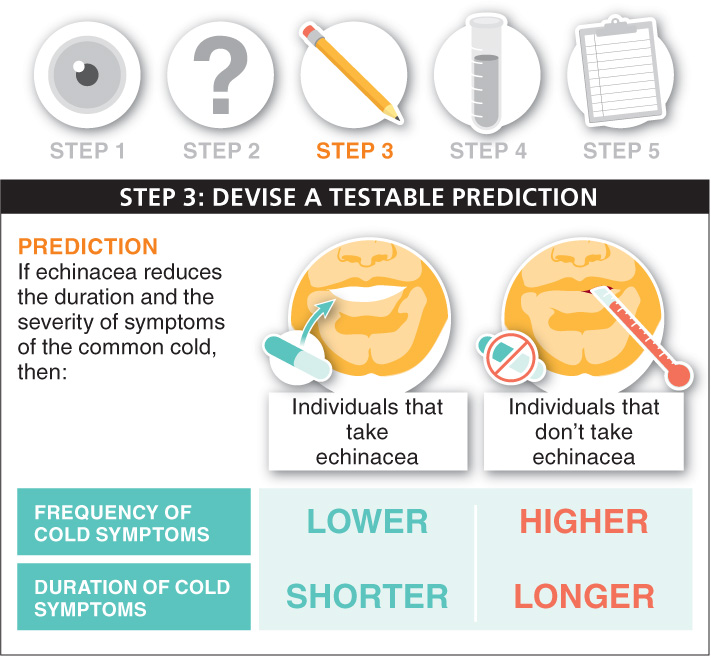Not all hypotheses are created equal. For a hypothesis to be useful, it must generate a prediction. That is, it must suggest that under certain conditions we will be able to observe certain outcomes. Put another way, a good hypothesis helps us make predictions about novel situations. This is a powerful feature of a good hypothesis: it guides us to knowledge about new situations.
All of this is rather abstract. Let’s get more concrete with the three hypotheses we are considering. Keep in mind that when you do not understand some aspect of the world, any one of several possible explanations could be true. In devising a testable prediction from a hypothesis, the goal is to propose a situation that will give a particular outcome if your hypothesis is true, but will give a different outcome if your hypothesis is not true.
Hypothesis: Eyewitness testimony is always accurate.
Prediction: Individuals who have witnessed a crime will correctly identify the criminal regardless of whether multiple suspects are presented one at a time or all at the same time in a lineup.
This is a good, testable prediction because, if our hypothesis is true, then our prediction will always be true. On the other hand, if one method of presenting suspects consistently causes incorrect identification of the criminal, our hypothesis cannot be true and must be revised or discarded.
11
Hypothesis: Echinacea reduces the duration and severity of the symptoms of the common cold.
Prediction: If echinacea reduces the duration and severity of the symptoms of the common cold, then individuals taking echinacea should get a cold less frequently than those not taking it, and when they do get sick, their illness should not last as long (FIGURE 1-10).

Hypothesis: Hair that is shaved grows back coarser and darker.
Prediction: If shaving leads to coarser, darker hair growing back, then if individuals shaved one leg (or eyebrow) only, the hair that re-
As you begin to think scientifically, you will find yourself making a lot of “if … then” types of statements: “If that is true,” referring to some hypothesis or assertion someone makes, or perhaps a claim made by the manufacturer of a new health product, “then I would expect …,” proposing your own prediction about a related situation. Once you’ve made a testable prediction, the next step is to go ahead and test it.
TAKE-HOME MESSAGE 1.7
For a hypothesis to be useful, it must generate a testable prediction.
List a specific hypothesis and its testable prediction as an if…then statement.
The textbook gives several examples: “If echinacea reduces the duration and severity of the symptoms of the common cold, then individuals taking echinacea should get sick less frequently than those not taking it, and when they do get sick, their illness should not last as long.”
Another example is: “If shaving leads to coarser, darker hair growing back, then if individuals shave one leg only, the hair that re-grows on that leg should be darker and coarser than the hair growing on the other leg.”
Remember that a good testable prediction always will be true if our hypothesis is true.